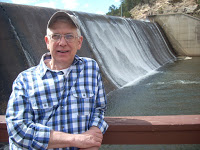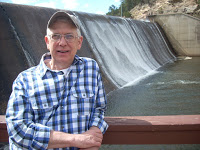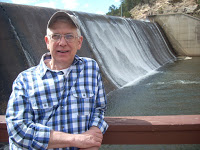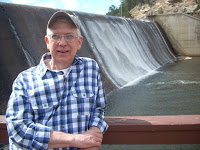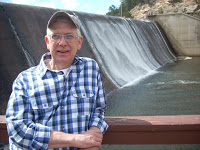In college I was studying to be a minister and a musician. I had been in preparation for both for years in a family deeply involved in the church’s work of education, administration, eldership, and music. In this last category Dad was the church organist and all of us kids sang in church and school choirs. In undergraduate years I studied Bible and theology and eventually added a major in sacred music. Choral and vocal music were my great passion. I also liked teaching although not preaching.
Identifying just where I would work in the church showed me how much I treasured the music and educational ministries. I worked hard in these areas for years directing choirs, developing music libraries, writing curriculum resources, organizing special events, supporting time-worn groups like Sunday School, teacher training, Bible studies, and the like. I organized drama programs, directed musicals, planned special services and events, especially around holidays. I excelled in and enjoyed such work. I also did pastoral work, for example, making hospital calls, visits to care homes, marrying couples, burying the dead, memorializing people who figured large in the congregation or completely unknown to me. I preached but never identified as a preacher.
In seminary I learned that the Master of Ministry degree was the last surviving graduate professional degree designated as ‘generalist’. Given my experiences in several churches before I attended seminary, that idea seemed an apt description. While I liked the wide variety of work it demanded, I found myself more and more drawn to the artistic parts of events. If a design called for crafts, my goal was to make them art projects with freedom. I thought that this was the best way to communicate with children something lasting and religious. I wanted the kids to learn things they couldn’t forget and learn skills as well as information. So I planned art projects and eventually wanted to do that work myself beginning with collage, graduating to mixed media, drawing, and eventually painting. I attended art workshops. I enjoyed art for myself as well as for my church related work.
In Albuquerque, Cecelia Daniels, a woman in the congregation, gave me a book telling me she wanted to teach it with me. I read the book but didn’t really like Julia Cameron’s The Artist’s Way with its workshop approach and New Age and sometimes magical idea. I knew that Cecelia had years of training in group process and sensitivity training. I wanted to learn from her more than I wanted to teach. The thirteen weeks of the course somewhat changed my self-understanding. It also facilitated changes in other participants. Cameron’s Artistic Recovery spoke to me. While I hated the affirmations Cameron insisted I use daily, I wrote them anyway, even the one: “I, Phillip Hoyle, am a brilliant and prolific artist.” I forced myself to affirm that idea daily for many years always thinking: I’m not so sure about brilliant or prolific. (I still write it occasionally and still get emotionally stopped.) I know the problem is that I was a musician who didn’t really think of himself as an artist, a writer who didn’t think of himself as an artist. I realized I was always an artist mustered the courage to identify myself as one.
Identification as an artist was just as much a challenge to me as identifying myself as bisexual.
OH, this story was about WHEN.
I realized I was in love with a man when I was 30 years old. That was 40 years ago. I realized I was an artist when I was around 40 years old. Of course there were hints years before related to both identities. I wonder: is coming out or coming in or coming to really all that difficult? I suspect so, AND I suspect there are more identities to be adopted in the years to come. I just hope I’ll be sentient enough, brash enough, and happy enough to make them.
© 25 June 2018
About the Author
Phillip Hoyle lives in Denver and spends his time writing, painting, and socializing. In general he keeps busy with groups of writers and artists. Following thirty-two years in church work and fifteen in a therapeutic massage practice, he now focuses on creating beauty. He volunteers at The Center leading the SAGE program “Telling Your Story.”
He also blogs at artandmorebyphilhoyle.blogspot.com



